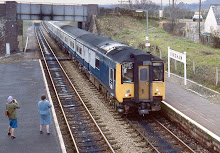
This LLGFF was, for me, book-ended by films which featured the fucked-up gay kid standing on the parapet of a bridge, ready to end it all: but whereas he plunged to his death in Prayers for Bobby, in The Man Who Loved Yngve he was saved to come out and find eternal happiness. Or something like that. Still, at least it was movement in the right direction.
The final three...
Brotherhood wasn't my choice, but my lovely friend F. insisted there was nothing else he wanted to see other than this Danish film about gay neo-Nazis.

That description tells you pretty much all you need to know: other than the vaguely shocking context (how often do we see crowds of supposedly "modern" Europeans giving synchronised "Sieg Heils"?) it was very, very run-of-the-mill.

There was, at least, a little bit of cock in it, although the film was so violent I struggled to derive much salacious pleasure.
The Man Who Loved Yngve was also from the northern reaches of the continent, this time Norway: a sweet coming-of-age/coming-out story set in a music-obsessed 1989, where the synthetic strains of David Sylvian's Japan conclusively thrashed the turgid squawkings of assorted heavy metal "bands".

There was an appalling shortage of cock on display, but otherwise this was a very witty film whose fast-pacing helped to disguise the homophobia and self-loathing.
Also desperately short of cock, but offering other consolations, was Soundless Wind Chime, a Hong Kong/China/Swiss co-production.

Featuring an assortment of more-or-less childishly needy (and probably co-dependent/enabling) adults, there was still some good stuff to be had. The evocation of Hong Kong and Beijing was delightful, while the constant time- and place-shifting around the subject of love and loss reminded me of 2000's brilliant French film Presque Rien. The two leads were lovely, including Bernhard Bulling who pulled-off a double-lead as two different characters -- and, incidentally, gave us a nice show of pulling himself off.

Though not as explicit as I might have liked given that this is, essentially, a soft porn festival, it's this film I'll probably remember for longer than the others.

















.jpg)
.jpg)
.jpg)
.jpg)


























